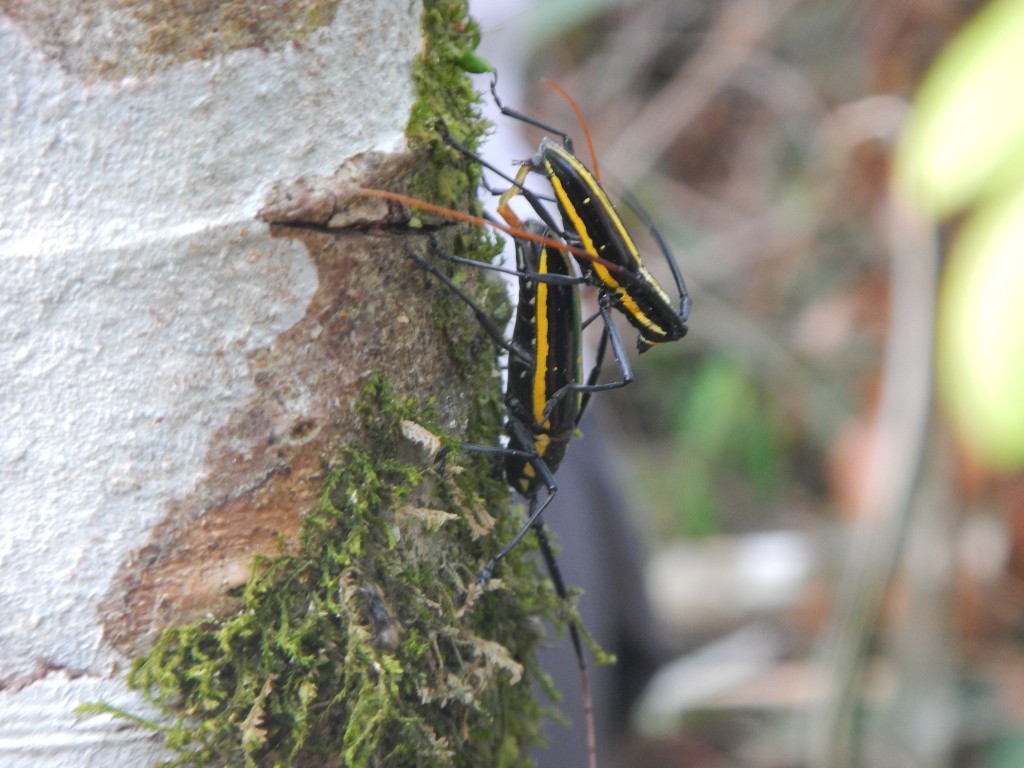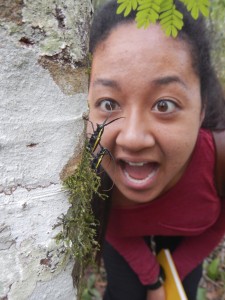During the summer, I was fortunate enough to take the EBIO 319 class. It was a two-week course that took place in the breath-taking and exotic Belize.
While strolling through the magnificent Chiquibul rainforest, we saw longhorn beetles mating! We probably spent a good thirty minutes observing this bizarre sexual encounter!
Before I start, let’s learn more about the longhorn beetles!!
The scientific name for longhorn beetles is Cerambycidae. Cerambycidae is a rather large family of beetles that consists of thousands of species. They are worldwide and their range is from sea level up to 4,200 m elevations. As larvae they feed on decaying wood while adults feed on flowers. Longhorn beetles tend to live for 1 to 3 years.
The beetles we saw in the rainforest were spectacular. Black with bright yellow strips running down their back, their exceptionally long antennae… UGH, what a beauty! The antennae were also two different colors. The base was black and it gradually turned into an orange/yellow color.
The first thing that caught my attention was the fact that the female longhorn beetle was much larger than the male longhorn beetle. This seems odd just because we are so used to sexual dimorphism in the other direction (males being larger than females). I’m not sure why this is the case, but it would be something worth looking into.
Now to the copulation!
Disclaimer: This is all based on my observations and inferences; I cannot definitively say this is how this particular species of Cerambycidae mate.
First, the male beetle latches onto the female. Once he is secured, she would lead both of them to the “ideal spot” for her to lay her eggs. Once she found the spot, the copulation would begin. While they were mating, we noticed that the female longhorn would create a horizontal slit with her mandibles. Once they finished, they would reorient themselves so that the horizontal slit would be located where her ovipositor was. During this entire process, the male still has a strong grip on the female. Once her ovipositor was inside the horizontal slit, she would begin shaking. We made the assumption that this was when the female deposited her eggs into the tree trunk. They would repeat this process numerous times. Unfortunately, we couldn’t continue creeping on the critters because it was getting dark outside so we returned to the research station.
If you want to learn more about these awesome Longhorn beetles check out awesome websites below!
http://bugguide.net/node/view/171
http://eol.org/pages/357/details
http://www.fzi.uni-freiburg.de/InsectPestKey-long%20version/cerambyc.htm
Click on video to watch the beetles mating!


